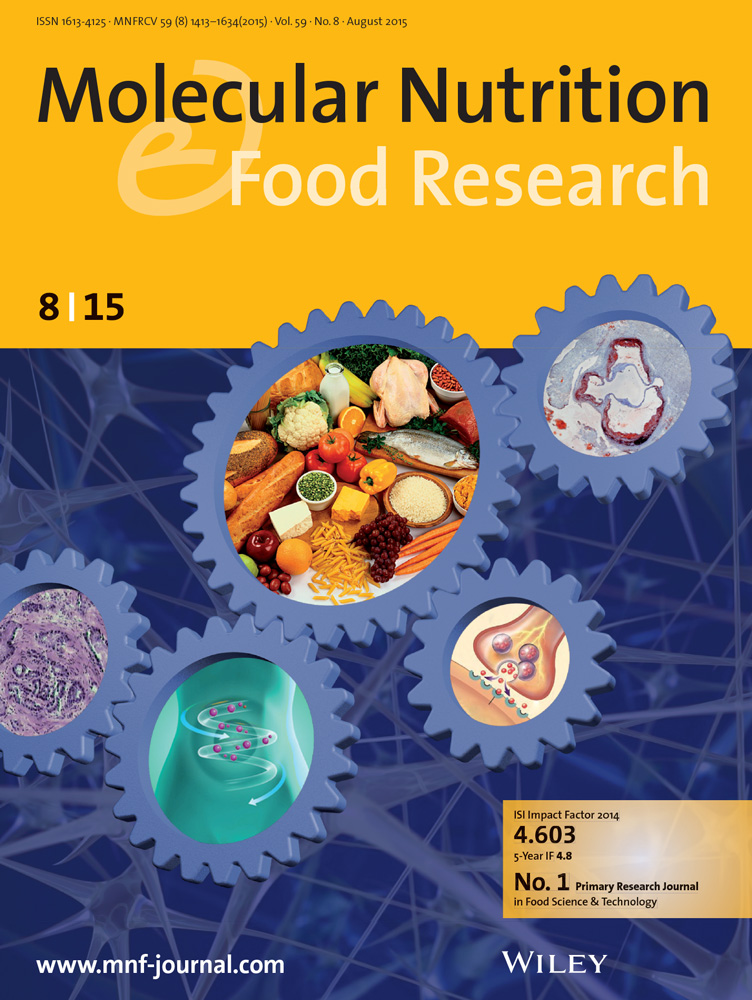合成黄酮类衍生物对糖尿病相关神经变性的改善潜力。
IF 4.2
2区 农林科学
Q1 FOOD SCIENCE & TECHNOLOGY
引用次数: 0
摘要
本研究通过计算机和体内评估,探讨合成的化合物2-(1,3-苯二酚-5-基)- 4h - chromen4 -one -5 (2BDC45)对糖尿病相关神经变性的神经保护作用。分子对接的硅探针显示,2BDC45对目标酶(乙酰胆碱酯酶、丁基胆碱酯酶和DPP-4)的结合能分别为-8.5、-9.3和-7.4 kcal/mol。通过100 ns分子动力学模拟,评估RMSD、RMSF、SASA、MMPBSA和PCA等参数,进一步证实了这些发现。2BDC45治疗在2型糖尿病相关神经变性的海马和皮质区域显示出神经保护变化。因此,对这些大脑区域的组织病理学分析,以及对关键基因如GLUT-3、GSK、MAP和PPARγ的分子生物学分析,证实了神经保护作用。脂质谱、HOMA和抗氧化剂在治疗干扰下表现出显著的变化。通过跟踪GLUT-3和GSK的表达,这些处理显示出糖代谢的显著改善,而MAP激酶和PPARγ在皮质和海马中显示出显著的恢复。综上所述,试验黄酮衍生物具有通过清除自由基、改善葡萄糖代谢和靶向基因表达来增强神经可塑性的能力。本文章由计算机程序翻译,如有差异,请以英文原文为准。
Ameliorative Potential of Synthetic Flavone-Derivative in Diabetes-Associated Neurodegeneration.
The current study was carried out to explore the neuroprotective efficacy of the synthesized compound 2-(1,3-benzodioxol-5-yl)-4H-chromen-4-one 5 (2BDC45) in diabetes-associated neurodegeneration through in silico and in vivo assessments. In silico exploration of molecular docking showed a significant binding energies of -8.5, -9.3, and -7.4 kcal/mol for 2BDC45 against the target enzymes, i.e., acetylcholinesterase, butyrylcholinesterase, and DPP-4, respectively. These findings were further confirmed through 100 ns molecular dynamics simulations, assessing parameters like RMSD, RMSF, SASA, MMPBSA, and PCA. Treatment with 2BDC45 exhibited the neuroprotective changes in the hippocampus and cortex regions of type 2 diabetes-associated neurodegenerations. Consequently, histopathological analysis of these brain regions, supported by molecular biological analyses of key genes such as GLUT-3, GSK, MAP, and PPARγ corroborated the neuroprotection. The lipid profile, HOMA, and antioxidants exhibited notable changes by the interference of the treatments. The treatments shown significant ameliorations in glucose metabolism by following the expressions of GLUT-3 and GSK, while MAP kinase and PPARγ showed significant restorations in the cortex and hippocampus. In conclusion, it can be implied the test flavone derivative has the capacity to amplify neural plasticity by following the scavenging of free radicals, improved glucose metabolism, and targeted genes expression.
求助全文
通过发布文献求助,成功后即可免费获取论文全文。
去求助
来源期刊

Molecular Nutrition & Food Research
工程技术-食品科技
CiteScore
8.70
自引率
1.90%
发文量
250
审稿时长
1.7 months
期刊介绍:
Molecular Nutrition & Food Research is a primary research journal devoted to health, safety and all aspects of molecular nutrition such as nutritional biochemistry, nutrigenomics and metabolomics aiming to link the information arising from related disciplines:
Bioactivity: Nutritional and medical effects of food constituents including bioavailability and kinetics.
Immunology: Understanding the interactions of food and the immune system.
Microbiology: Food spoilage, food pathogens, chemical and physical approaches of fermented foods and novel microbial processes.
Chemistry: Isolation and analysis of bioactive food ingredients while considering environmental aspects.
 求助内容:
求助内容: 应助结果提醒方式:
应助结果提醒方式:


